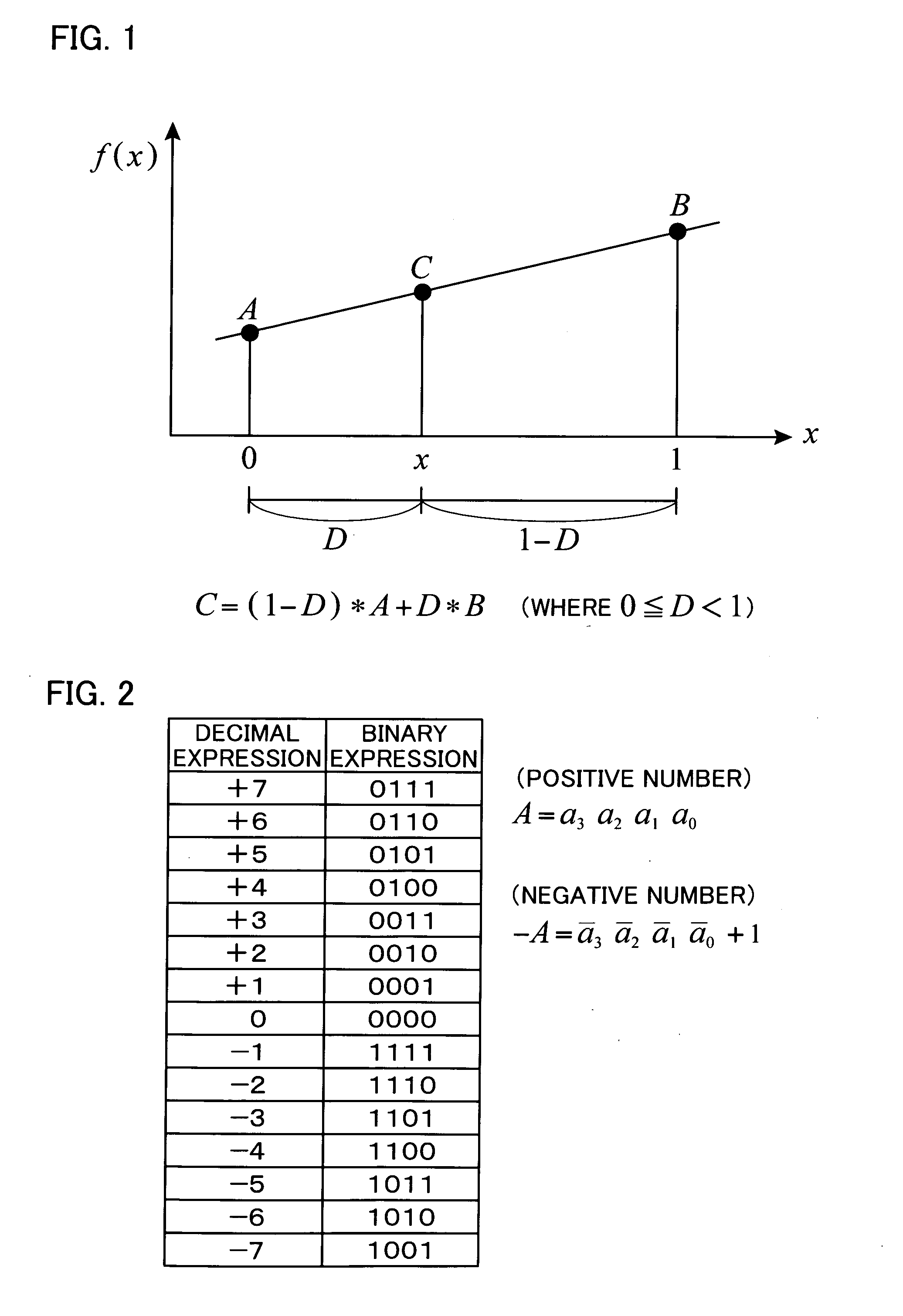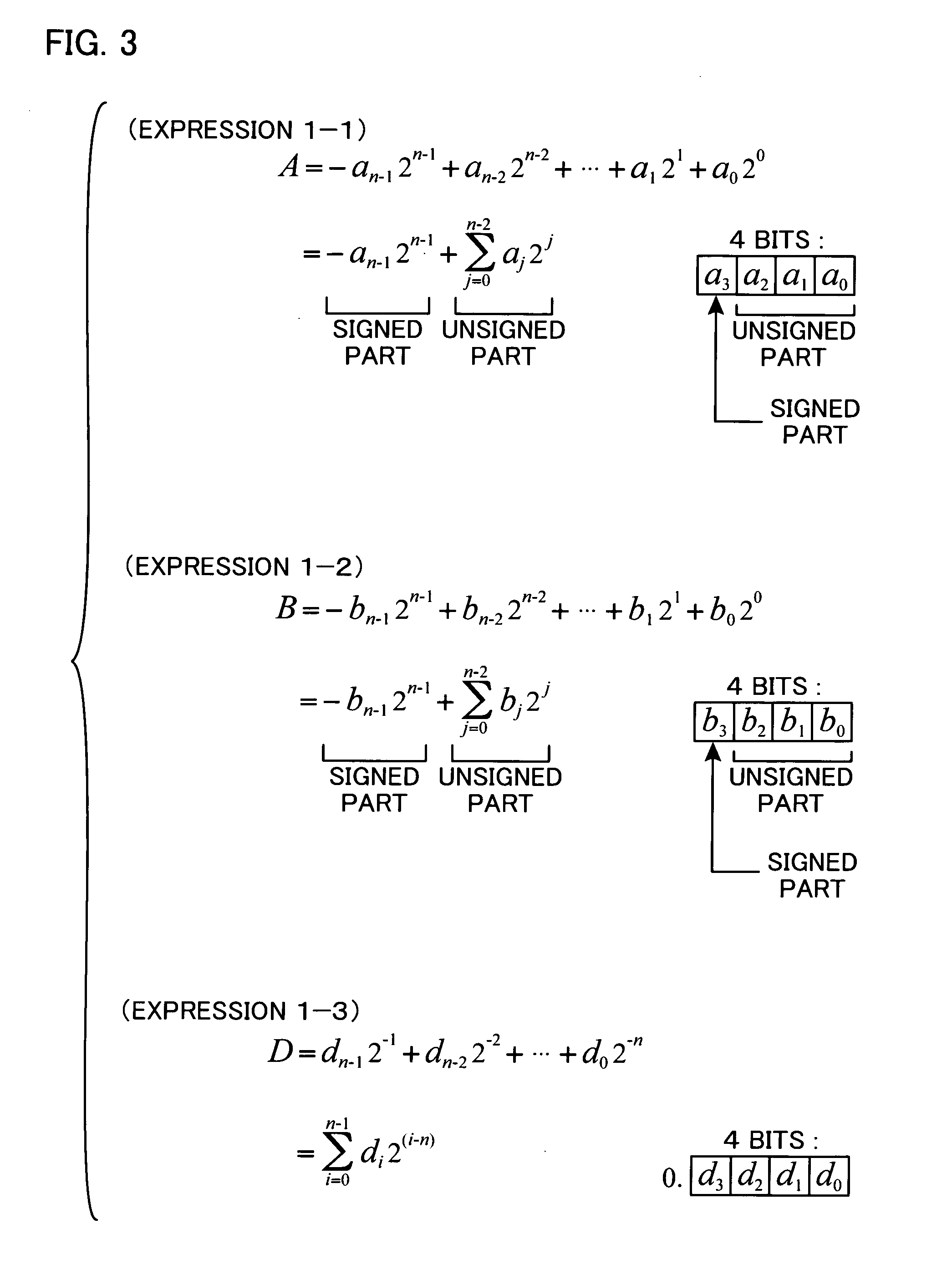Interpolator and designing method thereof
a linear interpolator and design method technology, applied in the field of linear interpolators and designing methods thereof, can solve the problems of inability to perform efficient calculations, inability to achieve efficient calculations, etc., to achieve efficient cubic spline interpolation, simple circuitry, and high accuracy
- Summary
- Abstract
- Description
- Claims
- Application Information
AI Technical Summary
Benefits of technology
Problems solved by technology
Method used
Image
Examples
Embodiment Construction
Section 1. Embodiment of First Aspect of the Invention
[0195] Here, an embodiment illustrating a first aspect of the invention will be described. The first aspect of the invention proposes a technique for efficiently executing linear interpolation of two signed interpolation target values by a simple constitution.
>>
[0196] First, a basic concept of general linear interpolation and general negative number expression in digital data will be briefly described. FIG. 1 is a graph showing a basic concept of linear interpolation. In the illustrated example, an interval 0-1 is set on the X axis and a method for calculating a function value at an arbitrary position x in the interval 0-1 when a value of the function f(x) is defined only at both ends of the interval is shown. In detail, when f(0)=A and f(1)=B, a value of a function f(x)=C about arbitrary x in the range of 0≦x≦1 is calculated by interpolation using values A and B.
[0197] In linear interpolation, as illustrated, a straight line ...
PUM
 Login to View More
Login to View More Abstract
Description
Claims
Application Information
 Login to View More
Login to View More - R&D
- Intellectual Property
- Life Sciences
- Materials
- Tech Scout
- Unparalleled Data Quality
- Higher Quality Content
- 60% Fewer Hallucinations
Browse by: Latest US Patents, China's latest patents, Technical Efficacy Thesaurus, Application Domain, Technology Topic, Popular Technical Reports.
© 2025 PatSnap. All rights reserved.Legal|Privacy policy|Modern Slavery Act Transparency Statement|Sitemap|About US| Contact US: help@patsnap.com



